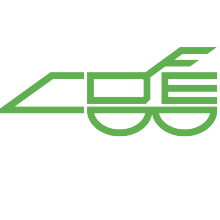Current projects
- Project Start:2017
- Project main objective(s):
- To research on technical status and the development trend of German rail transit vehicles focussing on life-cycle maintenance technique and train residual life evaluation techniques.
- Project Start:2017
- Project main objective(s):
- To develop of dynamics models for simulation and stability analysis between a single levitation magnet and the track, and a single levitation bogie and the track, in order to evaluate the ride comfort of the vertical motion.
- To propose a strategy for the levitation control systems
- To define and calculate of an Elastic Multi-Body Model to gain a better understanding of the dynamic behaviour, especially with respect to very low-speed and very high-speed movement.
- To determinate, validate and calibrate the optimal suspension parameters through the development of a scenario-based bench test.
- Project Start:2018
- Project main objective(s):
- To prepare documentation of the urban public transport fleet- which include trams, Light Rail Transit vehicles (LRT) and undergrounds - of the public transport companies in Germany.
- To conduct a compilation of the documentation and requirements for manufacturers in tendering procedures based on previous bidding processes.
- To carry out a Life-cycle Cost analysis for a specific type of vehicle.
Finished projects
- Project Start:2015
- Project End: 2016
- Project main objective(s):
- To elaborate a summary of the current state of research and applications concerning the inductive CET systems for electric vehicles and rail transport, as well as, to analyse the strengths and weaknesses of CET, and suggest possible solutions.
- To calculate the running times and energy consumptions for the dimensioning of the CET technology based on different operational cycles.
- To build the concepts for future high-speed trains with CET and design the system architecture to supply heavy rail inductively
- Project Start:2017
- Project End: 2018
- Project main objective(s):
- To identify and evaluate the maintenance of public rail vehicles including urban public transportation and railway vehicles.
- To estimate the cost of maintenance area of the above mentioned vehicles.
Contact

Yong Cui
apl. Prof. Dr.-Ing. habil.Head of the Working Group Intelligent Train, Academic Staff


